19 Apr, 2023
(edited)
2023-4-19 1:09:12 AM UTC
Edited by Dale Nelson on 2023-4-19 1:56:47 AM UTC
Edited by Dale Nelson on 2023-4-19 1:56:53 AM UTC
Edited by Dale Nelson on 2023-4-19 1:56:53 AM UTC
2023-4-19 1:09:12 AM UTC
From the Tolkien feature in the 1967 mag. The portrait of Tolkien is one I don't recall seeing elsewhere. It makes him look like a small mammal that has recently awakened from a winter's sleep and is pleased to see that the burrow appears to be in good order.
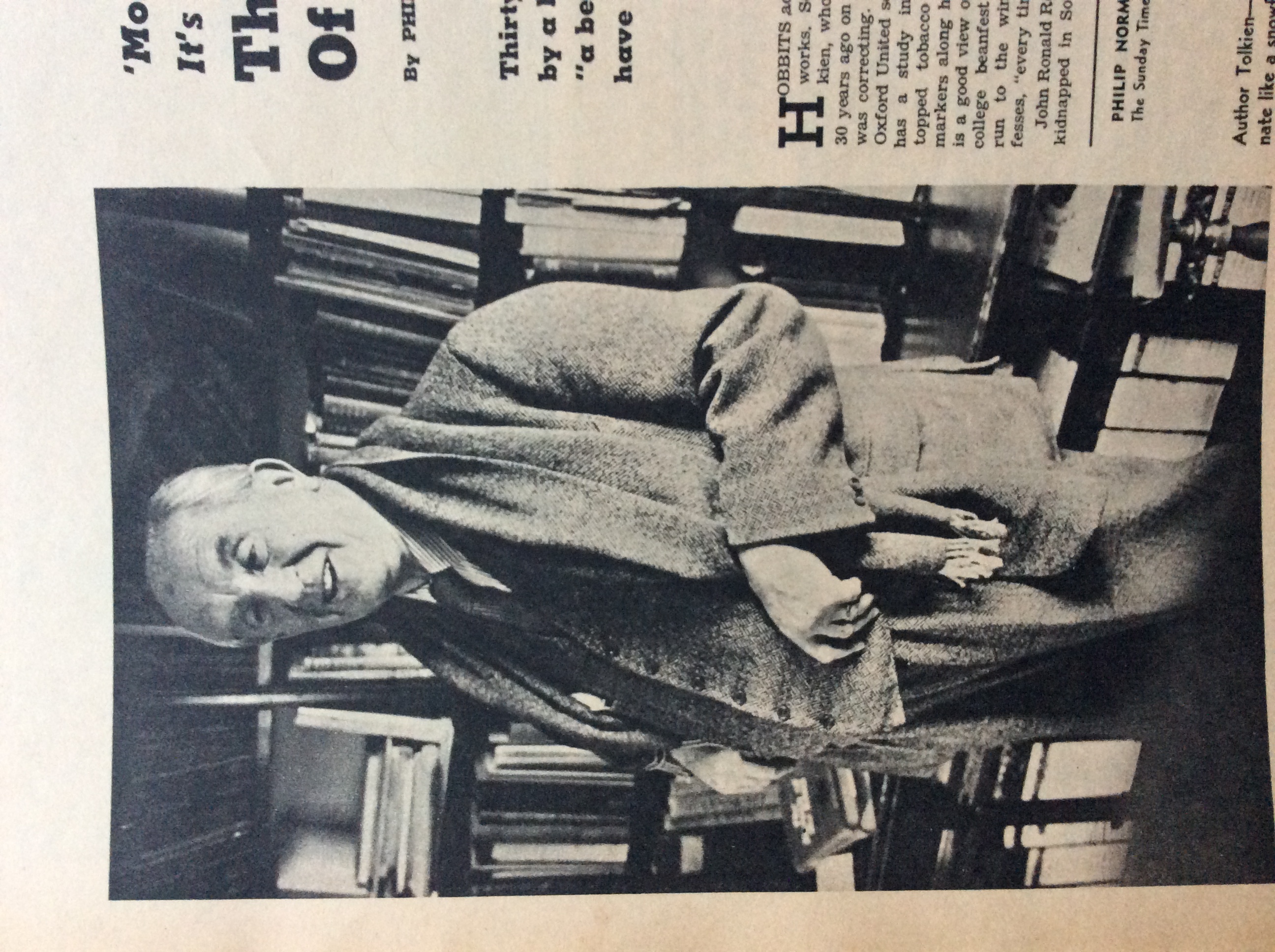
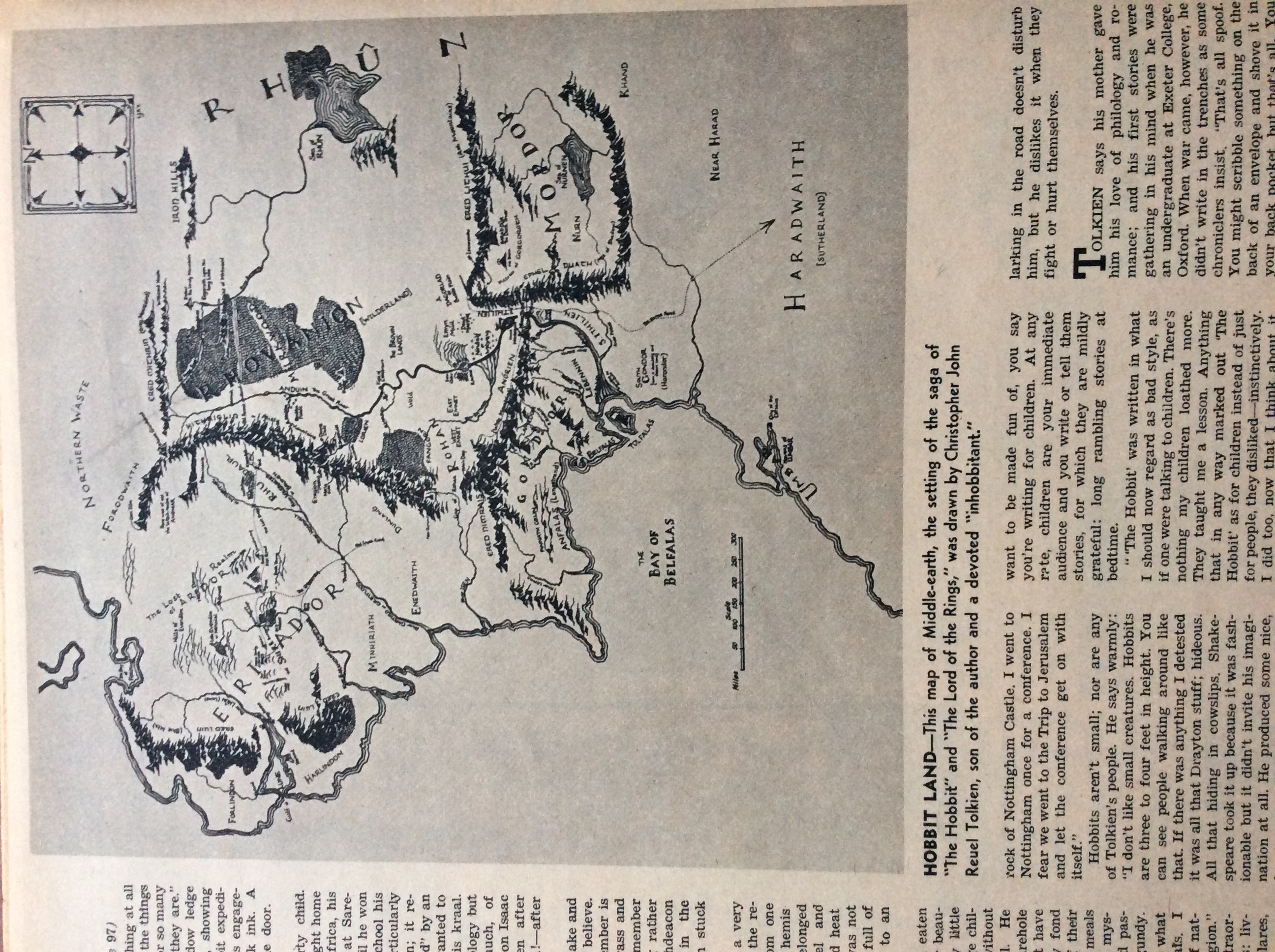
19 Apr, 2023
(edited)
2023-4-19 1:13:04 AM UTC
Edited by Dale Nelson on 2023-4-19 1:49:14 AM UTC
Edited by Dale Nelson on 2023-4-19 1:49:41 AM UTC
Edited by Dale Nelson on 2023-4-19 1:51:00 AM UTC
Edited by Dale Nelson on 2023-4-19 1:51:32 AM UTC
Edited by Dale Nelson on 2023-4-19 1:53:04 AM UTC
Edited by Dale Nelson on 2023-4-19 1:49:41 AM UTC
Edited by Dale Nelson on 2023-4-19 1:51:00 AM UTC
Edited by Dale Nelson on 2023-4-19 1:51:32 AM UTC
Edited by Dale Nelson on 2023-4-19 1:53:04 AM UTC
2023-4-19 1:13:04 AM UTC
Below, the sidebar in same issue of the New York Times Magazine. ...I think that's about all for my magazines from several decades back with Tolkienian content, aside from a couple or so issues of The New Statesman that aren't particularly interesting to look at. Not shown are my tearsheets of the issue of the New York Times Book Review with John Gardner's review of The Silmarillion. I bought the magazine new but saved only the review. Acchh! ...Does anyone have the magazine -- I think it was The New Republic -- in which Dick Plotz placed his notice about the Tolkien Society of America (I'm not sure it was called that, at the time)?
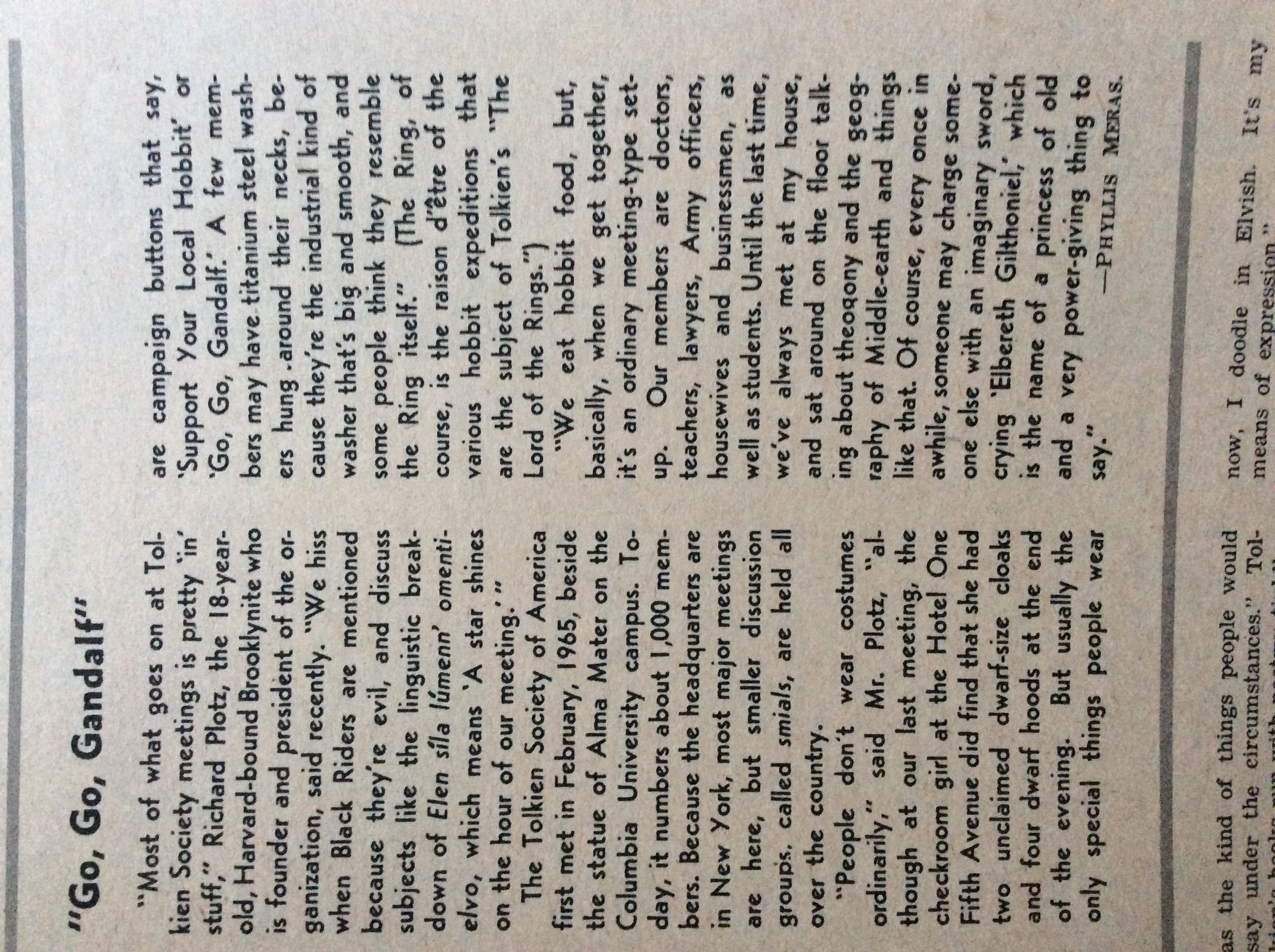
19 Apr, 2023
(edited)
2023-4-19 10:31:04 AM UTC
Edited by zionius on 2023-4-19 11:08:40 AM UTC
Edited by zionius on 2023-4-19 11:47:36 AM UTC
Edited by zionius on 2023-4-19 11:47:36 AM UTC
2023-4-19 10:31:04 AM UTC
These are amazing!
I have dived down the Sauron emblem rabbit hole. It is clearly related to Tolkien's doodle in A&I no. 185, dated Aug 1967 (TAI mistakenly dates it to 1969). The full Publishers Weekly piece (from Sep 4 1967 issue, which brought about “The Hobbit War” review) is as attached, claiming Tolkien as the source. Tolkien Journal 8 mentioned the same thing, but the source became Allen & Unwin.
Another version can be found in Mythlore: "It seems that Captain Hurray of the special forces, while teaching English to the Montagnard tribesmen, happened to mention Minas Morgul. This reminded the Montagnards of their own fortified villages,, they became interested and promptly flipped over the orcs. This particular tribe, the Gerai, use stout spears and large round shields, one of them decided to paint the Eye of Sauron on his shield and then paraded with it in Saigon in 1966. Photos were taken of it and the word spread from Vietnam to England and to Tolkien himself. After the meeting Dick Eney showed us slides and, even though the tribesman in question was some distance from the camera, the Eye of Sauron was quite visible on his shield."
And three biographies provide three different descriptions of it: https://www.tolkienguide.com/modules/n ... viewtopic.php?topic_id=21 , clearly based on the two versions of story given above.
I think the definitive answer lies in Patrick Curry's Defending Middle-Earth: "the South Vietnamese II Corps was rather perceptively fêted by tribesmen with shields bearing the Eye of Sauron. [The Sunday Times (6.8.1967) (with thanks to Charles Noad).]" Could someone with access check that issue of The Sunday Times?
My guess is the original story in The Sunday Times contained both South Vietnamese II Corps and the tribesmen. Tolkien saw the news on Aug 6 and drew the doodle, told his publisher, and the word got spread. But the publisher's story only had II Corps, and another story only had the tribesmen.
BTW, "General Loc" is probably Nguyễn Phước Vĩnh Lộc.
I have dived down the Sauron emblem rabbit hole. It is clearly related to Tolkien's doodle in A&I no. 185, dated Aug 1967 (TAI mistakenly dates it to 1969). The full Publishers Weekly piece (from Sep 4 1967 issue, which brought about “The Hobbit War” review) is as attached, claiming Tolkien as the source. Tolkien Journal 8 mentioned the same thing, but the source became Allen & Unwin.
Another version can be found in Mythlore: "It seems that Captain Hurray of the special forces, while teaching English to the Montagnard tribesmen, happened to mention Minas Morgul. This reminded the Montagnards of their own fortified villages,, they became interested and promptly flipped over the orcs. This particular tribe, the Gerai, use stout spears and large round shields, one of them decided to paint the Eye of Sauron on his shield and then paraded with it in Saigon in 1966. Photos were taken of it and the word spread from Vietnam to England and to Tolkien himself. After the meeting Dick Eney showed us slides and, even though the tribesman in question was some distance from the camera, the Eye of Sauron was quite visible on his shield."
And three biographies provide three different descriptions of it: https://www.tolkienguide.com/modules/n ... viewtopic.php?topic_id=21 , clearly based on the two versions of story given above.
I think the definitive answer lies in Patrick Curry's Defending Middle-Earth: "the South Vietnamese II Corps was rather perceptively fêted by tribesmen with shields bearing the Eye of Sauron. [The Sunday Times (6.8.1967) (with thanks to Charles Noad).]" Could someone with access check that issue of The Sunday Times?
My guess is the original story in The Sunday Times contained both South Vietnamese II Corps and the tribesmen. Tolkien saw the news on Aug 6 and drew the doodle, told his publisher, and the word got spread. But the publisher's story only had II Corps, and another story only had the tribesmen.
BTW, "General Loc" is probably Nguyễn Phước Vĩnh Lộc.

A couple of these have been shared already on this thread, but here is a gathering of contemporary reviews of LOTR from a variety of sci-fi magazines.
The reviews are for the most part positive, though Anthony Boucher (in Fantasy and Science Fiction) heaps by far the greatest praise - he asks rhetorically at the start of his Recommended Reading section in July 1956: "what does [a reviewer] do when he's present at the birth of one of the pure unquestionable classics of the century?"
Boucher does however make a criticism (though couched as a "personal" one) in terms of the "wordage...[being] protracted for its own sake." The length of the work does appear to be something that has vexed (or at least made an impact on) these reviewers in particular.
There's also an interesting anecdote in the review of TT in Science Fiction Quarterly, where the reviewer says that those who had been trying to get hold of a copy of FOTR "may have had a frustrating experience...[as the GA&U] sheets got caught in the British dock strike and sat on the pier for months." I had wondered before why the first publication in the US was quite a few months after the UK...
The reviews are for the most part positive, though Anthony Boucher (in Fantasy and Science Fiction) heaps by far the greatest praise - he asks rhetorically at the start of his Recommended Reading section in July 1956: "what does [a reviewer] do when he's present at the birth of one of the pure unquestionable classics of the century?"
Boucher does however make a criticism (though couched as a "personal" one) in terms of the "wordage...[being] protracted for its own sake." The length of the work does appear to be something that has vexed (or at least made an impact on) these reviewers in particular.
There's also an interesting anecdote in the review of TT in Science Fiction Quarterly, where the reviewer says that those who had been trying to get hold of a copy of FOTR "may have had a frustrating experience...[as the GA&U] sheets got caught in the British dock strike and sat on the pier for months." I had wondered before why the first publication in the US was quite a few months after the UK...
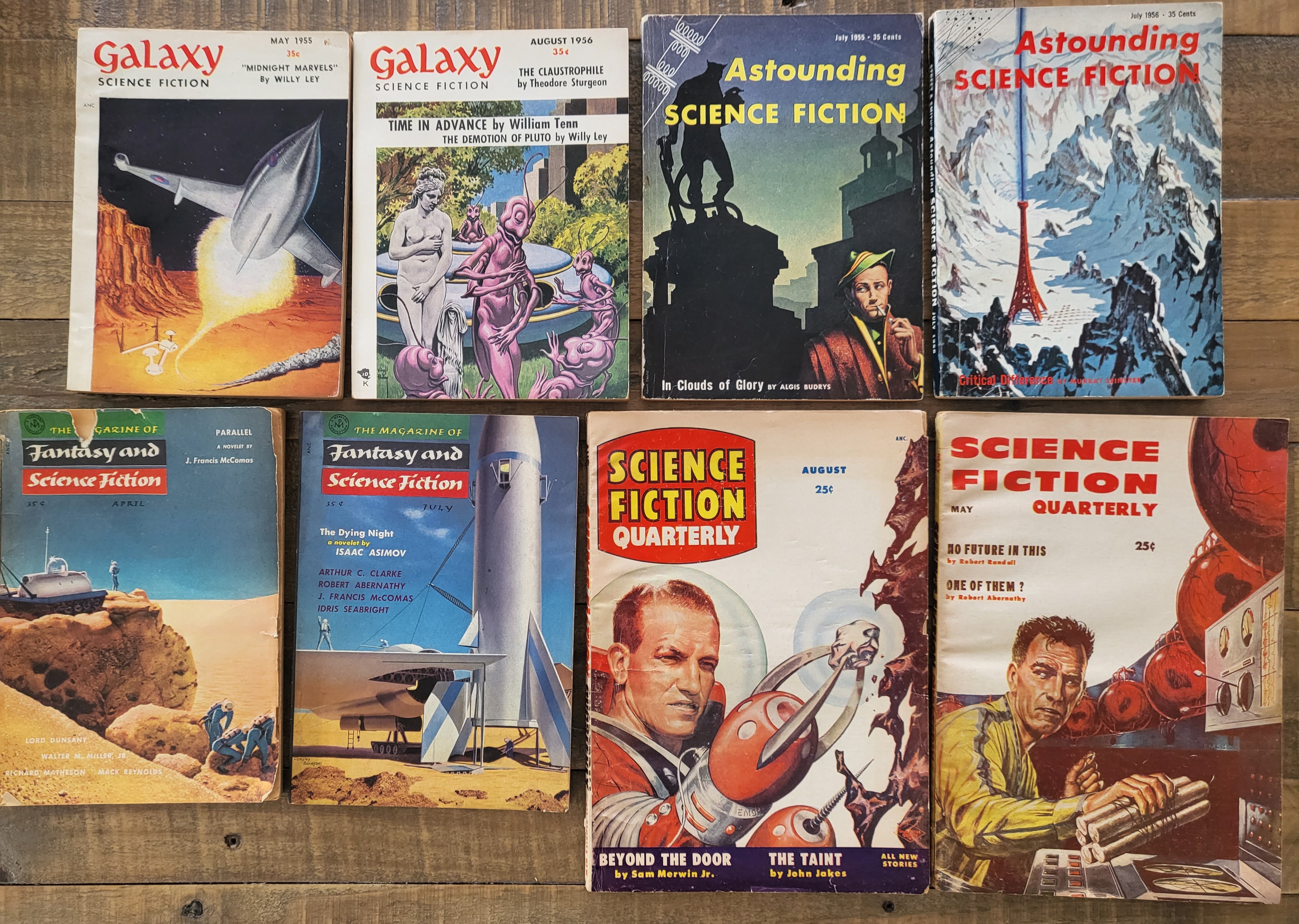
I think the reviewer meant 1955 British dock strike delayed US FR 1/3. He assumed many US readers couldn't find FR after his review in Aug 1955 issue, well after US FR 1/1's publication (21 Oct 1954).
A&U archive suggests 2000 copies (which is nearly half of the available number in the US by 1956) of FR 1/3 sheets were sent to the US in June 1955. And newspaper says the 1955 British dock strike lasted for 6 weeks in May-July. The 3 dates match well.
There was another strike in Oct 1954, but FR 1/1 can't be delayed by it.
A&U archive suggests 2000 copies (which is nearly half of the available number in the US by 1956) of FR 1/3 sheets were sent to the US in June 1955. And newspaper says the 1955 British dock strike lasted for 6 weeks in May-July. The 3 dates match well.
There was another strike in Oct 1954, but FR 1/1 can't be delayed by it.
zionius wrote:
I think the reviewer meant 1955 British dock strike delayed US FR 1/3. He assumed many US readers couldn't find FR after his review in Aug 1955 issue, well after US FR 1/1's publication (21 Oct 1954).
A&U archive suggests 2000 copies (which is nearly half of the available number in the US by 1956) of FR 1/3 sheets were sent to the US in June 1955. And newspaper says the 1955 British dock strike lasted for 6 weeks in May-July. The 3 dates match well.
There was another strike in Oct 1954, but FR 1/1 can't be delayed by it.
Ah now that makes a lot more sense. Thank you!
These two publications contain lengthy, insightful and engaging analyses of Tree and Leaf (though almost entirely looking at On Fairy-Stories), by Loren Eiseley and John Yolton.
(the Loren Eiseley piece was reprinted from the New York Herald Tribune a few months previously)
I think On Fairy-Stories is truly wonderful, so it's really interesting to see some of the early reception, once it achieved a wider publication than it had in the Essays Presented to Charles Williams.
As Eiseley says, "It is the task of the artist, as it is that of Divinity on a grander scale, successfully to sustain his universe, to will it into being in other minds than his own."
(the Loren Eiseley piece was reprinted from the New York Herald Tribune a few months previously)
I think On Fairy-Stories is truly wonderful, so it's really interesting to see some of the early reception, once it achieved a wider publication than it had in the Essays Presented to Charles Williams.
As Eiseley says, "It is the task of the artist, as it is that of Divinity on a grander scale, successfully to sustain his universe, to will it into being in other minds than his own."
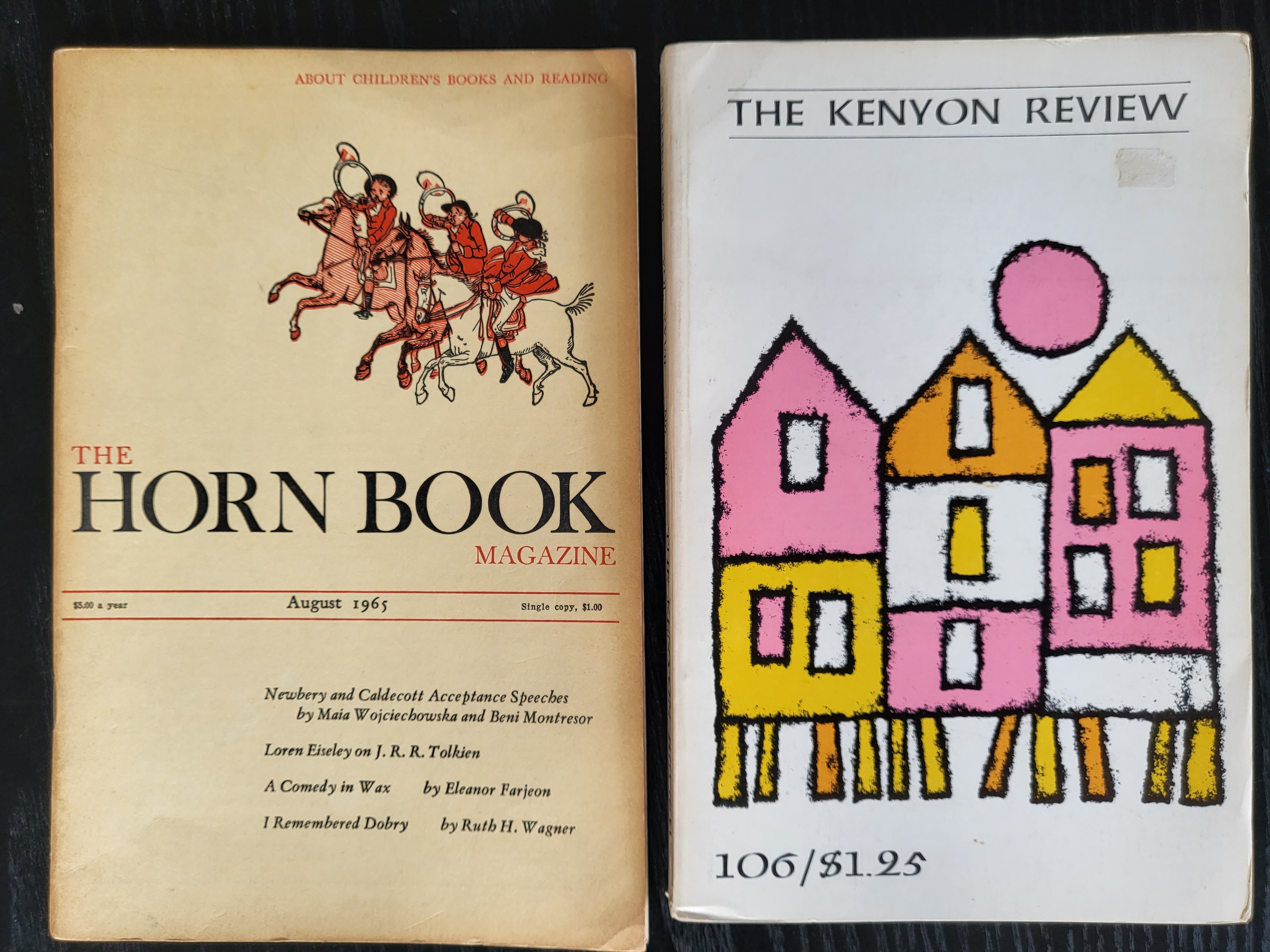
Just got a couple more sci-fi magazines with reviews - this time both of The Two Towers. Short reviews and not as interesting as some, but they resemble each other in (a) praising the work by comparison with Eddison's "The Worm Ourobouros" (to be fair a LOT of sci-fi reviews did this); and (b) feeling that the book was not up to the (high) standard set by The Fellowship of the Ring.
And to put things into a little historical context - the back page of Amazing Stories has a rather wonderful advertisement for reservations to the moon
And to put things into a little historical context - the back page of Amazing Stories has a rather wonderful advertisement for reservations to the moon

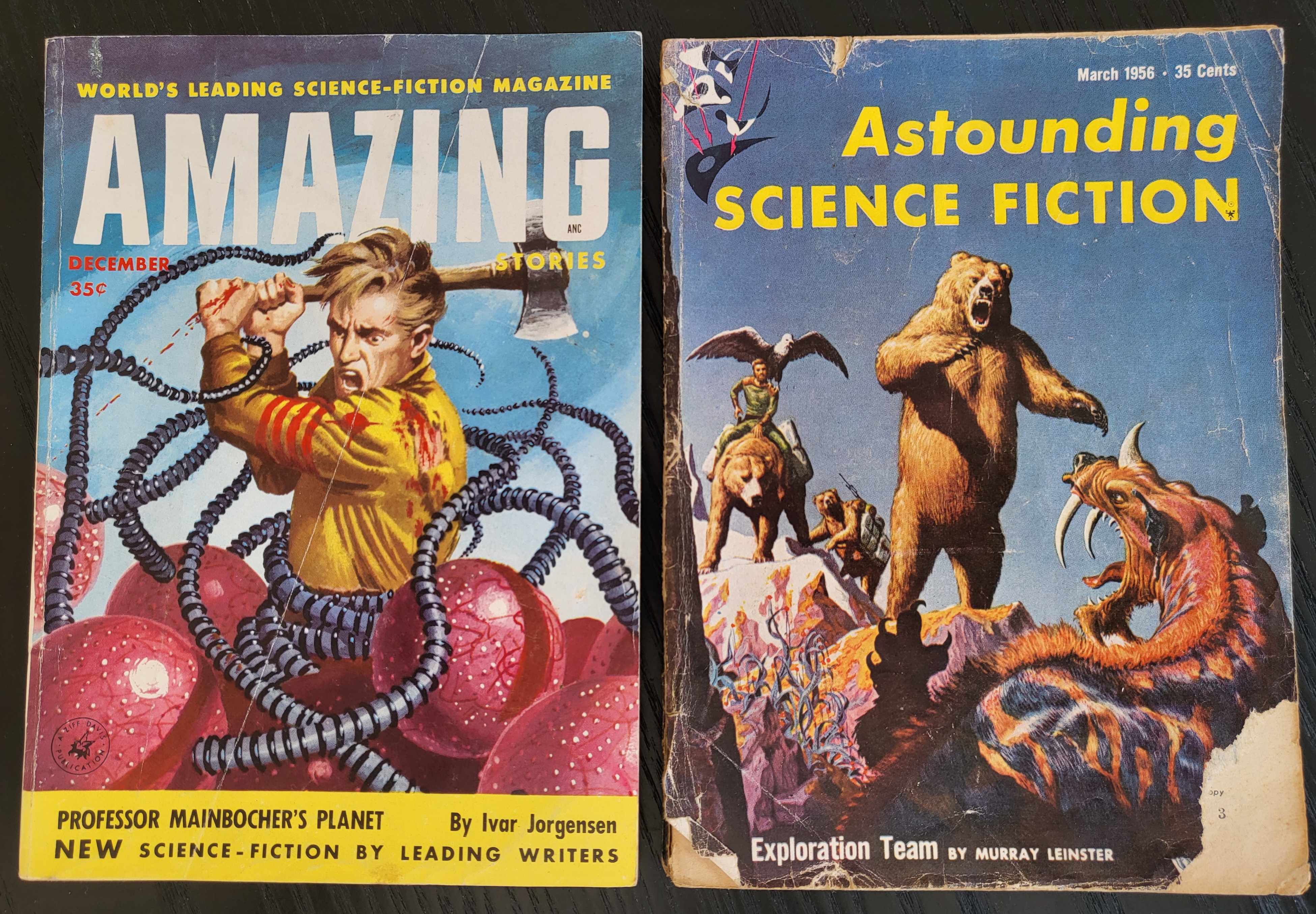
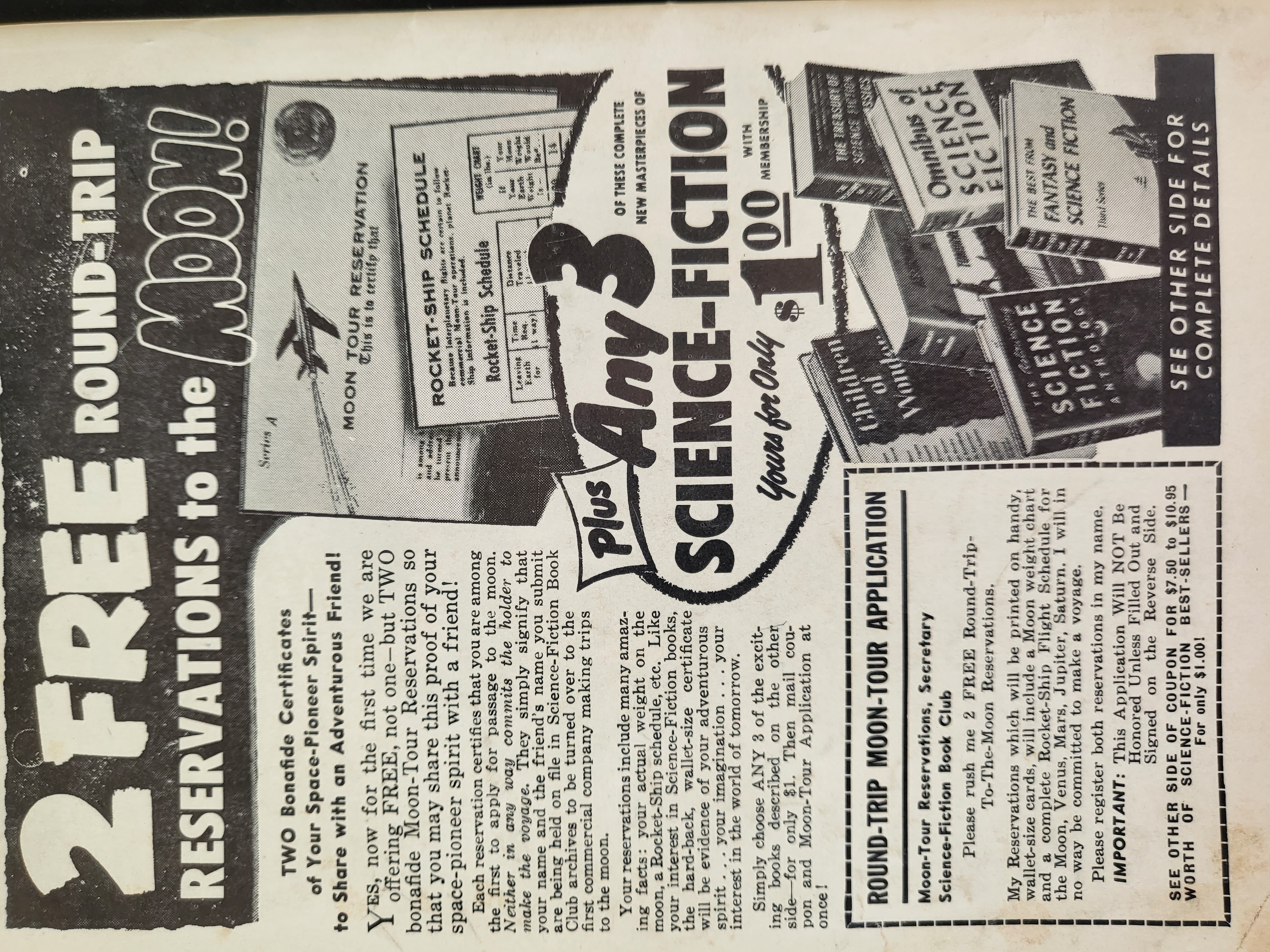
Predictable Matt wrote:
And to put things into a little historical context - the back page of Amazing Stories has a rather wonderful advertisement for reservations to the moon
I have my stuff all packed (including Tolkien ebooks) waiting for my launch…thank goodness these are round trip reservations ?









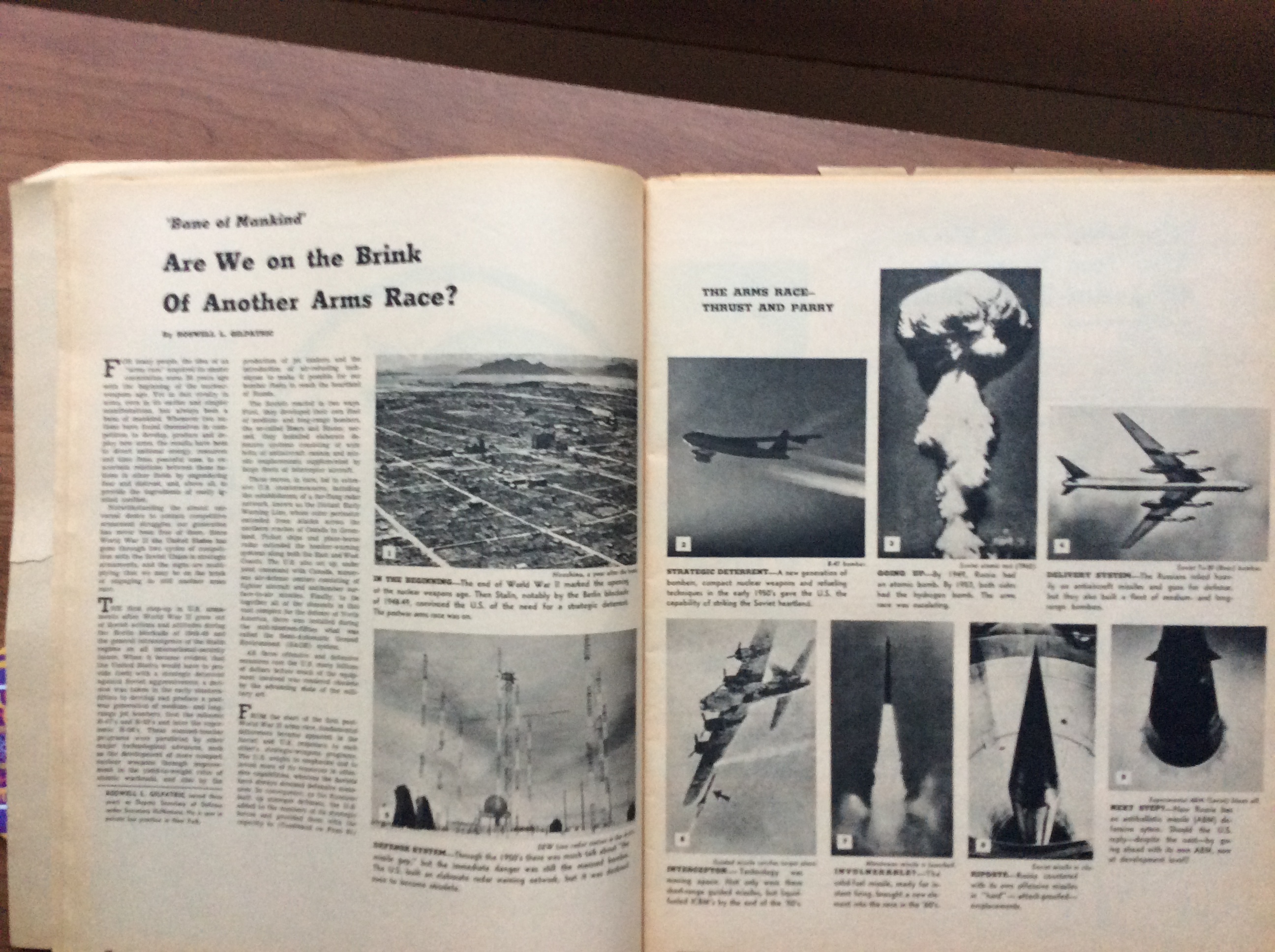



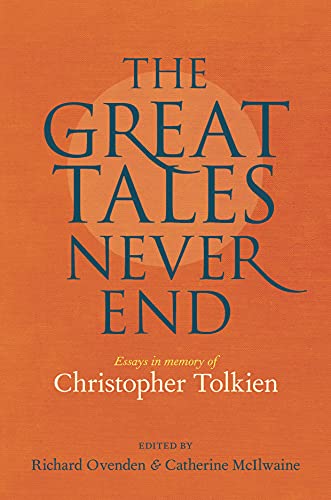
 10
10 3106
3106